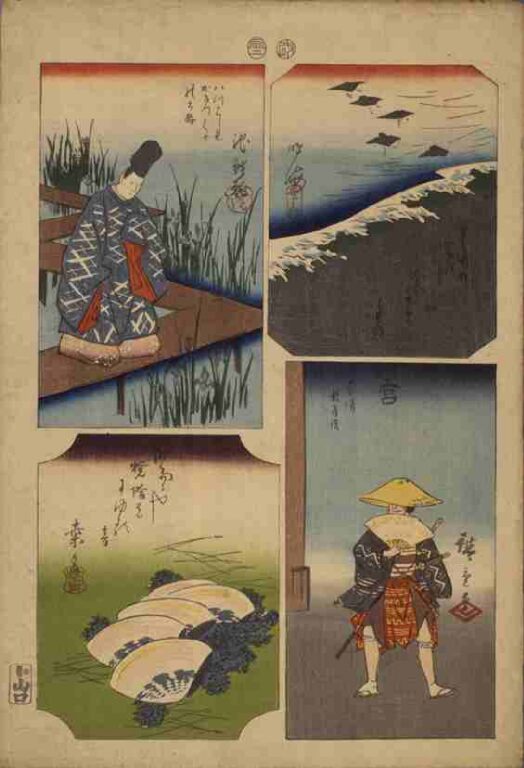資料名 |
Chiryu, Narumi, Miya, and Kuwana, from the series “Fifty-three Stations of the Tokaido Highway” |
解説 |
Utagawa Hiroshige 1856 ‘Chiryu’ was known for a place of historical interest where Kakitsubata, the rabbit-eared iris, used to grow. In the study, a figure that suggests Ariwara no Narihira, a poet of the Heian period is depicted. ‘Narumi’ illustrates ‘a thousand birds along the beach’. Narumi was a place of interest for a multitude of flying birds which were also referred to in a Haiku poem by Matsuo Basho. ‘Miya’ illustrates Taira no Kagekiyo. It is said that the Atsuta Jingu Shrine is a place remembered in connection with Taira no Kagekiyo and a pole of the Torii Gate is depicted on the left-hand side of the picture. At ‘Kuwana’, a speciality of the place, ‘Hamaguri’ ―clams― are depicted. Hiroshige produced many series of prints based on the Toukaidou Highway, and he also produced the different styles of work as this one. It is generally called “The Toukaidou with Harimaze-e (Paste the mixed pictures.)”, and three to five pictures of landscapes of post stations, local specialties and episodes or stories related to the places are illustrated in a single sheet. |
資料番号 |
10329 |







